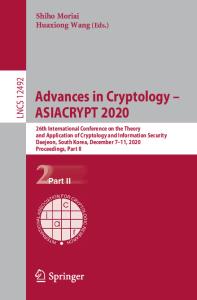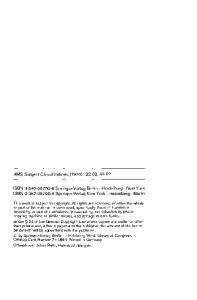Triangular Products of Group Representations and Their Applications
The construction considered in these notes is based on a very simple idea. Let (A, G ) and (B, G ) be two group representations, for definiteness faithful and finite 1 2 dimensional, over an arbitrary field. We shall say that a faithful representation (V
- PDF / 10,127,627 Bytes
- 140 Pages / 439 x 666 pts Page_size
- 74 Downloads / 282 Views
Progress in Mathematics Vol. 17 Edited by J. Coates and S. Helgason
Birkhauser Boston • Basel • Stuttgart
Samuel M. Vovsi
Triangular Products
of Group
Representations and Their Applications
1981
Birkhauser Boston • Basel • Stuttgart
Author: Samuel M. Vovsi Riga Polytechnic Institute Riga 226355 USSR
LC 81-71610
All rights reserved. No part of this publication may be reproduced, stored in a retrieval system, or transmitted, in any form or by any means, electronic, mechanical, photocopying, recording or otherwise, without prior permission of the copyright owner. ~Birkhauser
Boston, 1981
Softcover reprint of the hardcover 1st edition 1981 ISBN-13: 978-1-4684-6723-9 DOl: 10.1007/978-1-4684-6721-5
e-ISBN-13: 978-1-4684-6721-5
INTRODUCTION The construction considered in these notes is based on a very simple idea. Let (A, G 1 ) and (B, G 2 ) be two group representations, for definiteness faithful and finitedimensional, over an arbitrary field. We shall say that a faithful representation (V, G) is an extension of (A, G 1 ) by (B, G 2 ) if there is a G-submodule W of V such that the naturally arising representations (W, G) and (V/W, G) are isomorphic, modulo their kernels, to (A, G 1 ) and (B, G 2 ) respectively. Question. Among all the extensions of (A, G 1 ) by (B, G 2 ), does there exist such a "universal" extension which contains an isomorphic copy of any other one? The answer is in the affirmative. Really, let dim A = m and dim B = n, then the groups G 1 and G 2 may be considered as matrix groups of degrees m and n respectively. If (V, G) is an extension of (A, G 1 ) by (B, G 2 ) then, under certain choice of a basis in V, all elements of G are represented by (m + n) x (m + n)
mat-
rices of the form
l~1- ~ ~-J h
I g2 I
where gi
E
Gi ·
(*)
.
It is now clear that the natural representation (A
\9
B, G*) where G"
is the group of all possible matrices of the form (*) is the desired "universal" extension. Forestalling events, let us say that it is the representation (A
\9
B, G') that is
called the triangular product of the representations (A, G 1 ) and (B, G 2 ). It is the simplest example of this construction which, in general, relates to arbitrary representations over arbitrary commutative rings. Despite its naturality and transparency, the construction of triangular product appeared in an explicit form only in 1971. It was introduced by Plotkin [50J with the purpose of investigating the semigroup of varieties of group representations. Very soon t he construction turned out to have a number of interesting applications in other fields of algebra, and it was successfully used by many authors. Unfortunately, the corresponding results are rather disorderly scattered over the literature, some of them have been published in the editions which are not widely distributed (this also relates to the initial Plotkin i;S paper), but some of them have not yet been published at all. This
explains why a new man wishing to acquire the subject encounters a number of difficult ies,not only of .mathematical
Data Loading...











